Although not poisonous, this mushroom will ruin any dish you put it in due to its extreme bitterness.
Home / Mushroom Guide /
Bitter Beech Bolete
Bitter Beech Bolete
| Mushroom Type | |
| Common Names |
Bitter Beech Bolete (EN), Cap Tyllog Chwerw’r Ffawydd (CY), Gorzkoborowik Żółtopory (PL), Farkastinóru (HU) |
| Scientific Name |
Boletus / Caloboletus calopus |
| Synonyms |
Boletus calopus |
| Season Start |
Aug |
| Season End |
Nov |
| Average Mushroom height (CM) |
7-10 |
| Average Cap width (CM) |
7-10 |
Please note that each and every mushroom you come across may vary in appearance to these photos.
Cap
7-10 cm. Cloudy grey with some tan hints. Starting a bit downy but becoming smooth with age. Can crack towards the centre.
Stem
7-10cm long, 3-4.5 cm diameter. Lemon yellow at the top going into red and finally brown at the bottom, this is covered in a light coloured reticulation. The stem can vary from swollen to slim and has traces of ‘roots’ when pulled up.
Flesh
Pale yellow but turning immediately off white on cutting and changing to blue after a short time.
Habitat
Beech and oak but will grow with other deciduous trees, sometimes conifers.
Possible Confusion
Other Boletes, particularly the Rooting Bolete (Caloboletus radicans), pictured.
Spore Print
Olive/brown. Subfusiform.
Taste / Smell
Bitter.
Frequency
Fairly common.



 (15 votes, average: 3.67 out of 5)
(15 votes, average: 3.67 out of 5)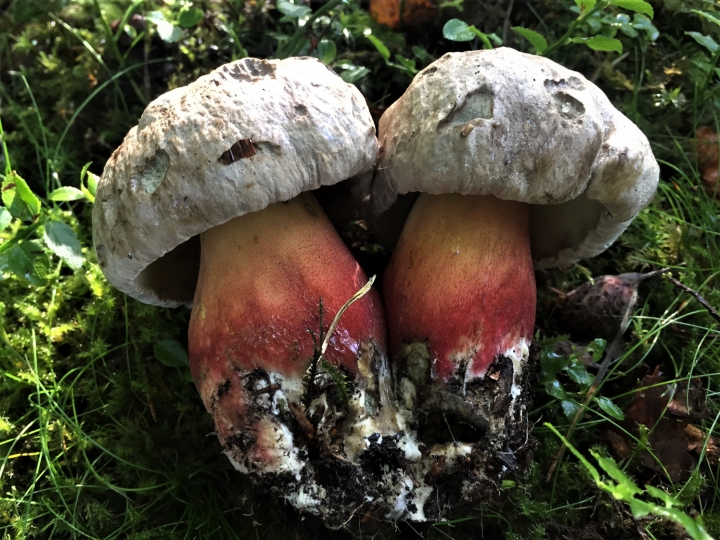
















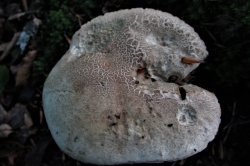
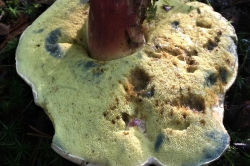
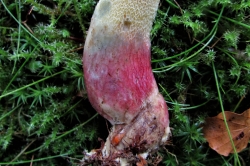
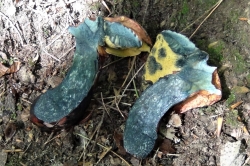
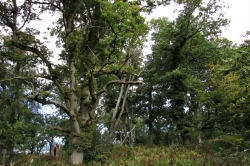
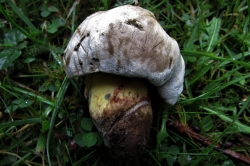






Leave a Reply